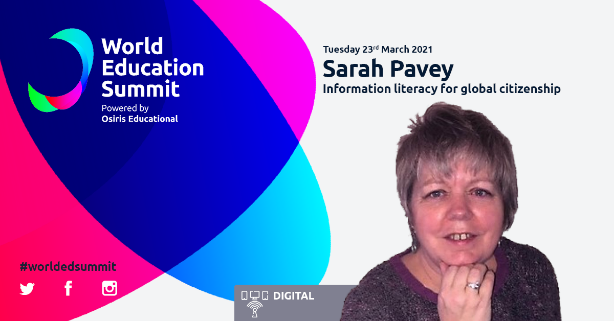Emma Burnett, a member of the ILG Comms team, has written the following report on the Creating Knowledge conference.
Creating Knowledge is a Nordic information literacy conference that is held every 2 – 3 years. It was meant to take place at the UiT Arctic University of Norway in Tromsø last June but had to be postponed. They decided to hold it online this year from 3rd to 4th June.

It must have been disappointing for the conference organisers who were looking forward to welcoming delegates to their beautiful city. However, being online didn’t mean that we went without the joy of discovering some of the culture and history of Tromsø. At the start of each day, and to close the conference, we were treated to recorded performances of the Tromsø Academic Women’s Choir in a variety of stunning local locations. You can access these beautiful recordings and a couple of interesting talks about Tromsø and Northern Norway on their Cultural Programme page.
The four keynotes were on varied topics, including conspiracy theories, symbolic technologies, models and definitions of information literacy, and information literacy as an adventure.
It was such a full and varied conference that I can’t do it justice in one blog post. However, I’ve picked out some of the key themes I noticed in the keynotes and parallel sessions I attended.
1. Online teaching
Unsurprisingly, the move to online teaching was a popular theme and I attended a couple of sessions on this. The first was from the University of Essex. They adapted their teaching to a Covid world in various ways, including having separate inductions for the online and the physical library. They put a speed databasing session on Libguides. They gamified online sessions, for example by using drawings in session instead of Lego. They found that online sessions had better attendance than when sessions were in person. However, there was a lack of interaction in some sessions and it was noticed that some students, particularly at Undergraduate level, don’t like breakout rooms and will leave the session. However, in contrast, taught Postgraduates and Postgraduate Researchers seem to find breakout rooms helpful.
The other session I attended on adapting to the new teaching environment was from the University of Oslo. A flipped classroom method was used, with students asked to watch videos before the class. The librarians had been finding it hard to engage with the students via Zoom so started “studio teaching”, where the teachers were together in a physical space with the students still online. This led to more student engagement. The essential ingredient that enabled this was that librarians were viewed as part of the teaching team, which leads nicely into the next theme.
2. Importance of collaboration
The benefits of collaboration were explored throughout the conference. One session showed how Lund, Bergen and Aarhus universities adapted UCL’s ABC method to develop blended learning courses together.
In New Zealand, researchers have worked with librarians and teachers on a project that explores information literacy spaces. They surveyed teachers and librarians in Secondary and Higher Education and then collaborated with four of them. The overall aim is to improve students’ information literacy skills.
At the University West in Sweden, a librarian and an academic have been working together for years on a Business Administration bachelor’s programme. They have a shared framework for this called the Scientific Wave. Each embedded IL session is co-taught by the academic and the librarian. There is a minimum of five IL sessions during the programme.
Connecting information literacy to the students’ assignments makes them see its importance. It was noted that this level of collaboration takes time and effort and it’s important to involve the librarian in planning the course right from the start. It is much harder to embed into existing courses. Again, this leads into the next theme.
3. Embedding information literacy has to start at the curriculum design stage
This was something highlighted by Dr Jane Secker’s keynote. Getting in at the curriculum design stage is the key to unlocking the perennial problem of embedding information literacy. Librarians need to talk to the people who help academics design the curriculum. The question is, how should we talk about IL so that people listen?
4. The importance of Frameworks and language around information literacy
The issues surrounding the term information literacy are well known to librarians. Many people aren’t sure what it means. Jane Secker suggested we use the language that our audience understands, whether that be digital literacy, media literacy, or something else. One example Jane used was the UK government’s media literacy strategy, which is basically about information literacy. The Information Literacy Group (ILG) is using this language to advocate IL on a national level by forming a new Media and Information Literacy alliance with CILIP (keep an eye on this blog for more details).
There have been many IL models and frameworks over the years and Jane Secker talked about the value of these due to the contextual nature of IL. It’s therefore encouraging to hear that the Information Literacy Group is creating a new framework (again, watch this space!).
5. Other interesting takeaways
As I said earlier, there was so much covered by this conference that I can’t summarise everything but here are some other useful takeways:
- Chris Morrison gave a talk introducing the Kent Copyright Literacy Strategy. If you are interested in Copyright and Online Learning, then you may wish to join this Special Interest Group.
- A PhD researcher at the UiT Arctic University of Norway has created a new Information Literacy Assessment tool, called TROILS. You can read more about this in the latest issue of the Journal of Information Literacy.
Dr Jane Secker’s keynote is available to watch online and her slides are available on Slideshare.
The two other keynotes that were recorded and PDFs of conference presentations are also available to view at Septentrio Conference Series.
I would like to take this opportunity to thank all of the conference organisers for putting together such a wonderful programme in challenging circumstances.



